made by Grunber
Welcome to this guide on handling scrap metal removal and disposal! Whether you’re working on a residential cleanout, a commercial project, or helping businesses manage waste, understanding the best practices for dealing with scrap metal is essential.
This guide will walk you through the process, from arriving on site to ensuring the metal is disposed of properly.

When you arrive at a customer’s property, whether it’s a home or a business, be friendly and professional. Your first task is to understand what needs to be removed.
Estimate the Volume and Weight: Get a sense of the size and weight of the items. This helps in planning the removal and transport.
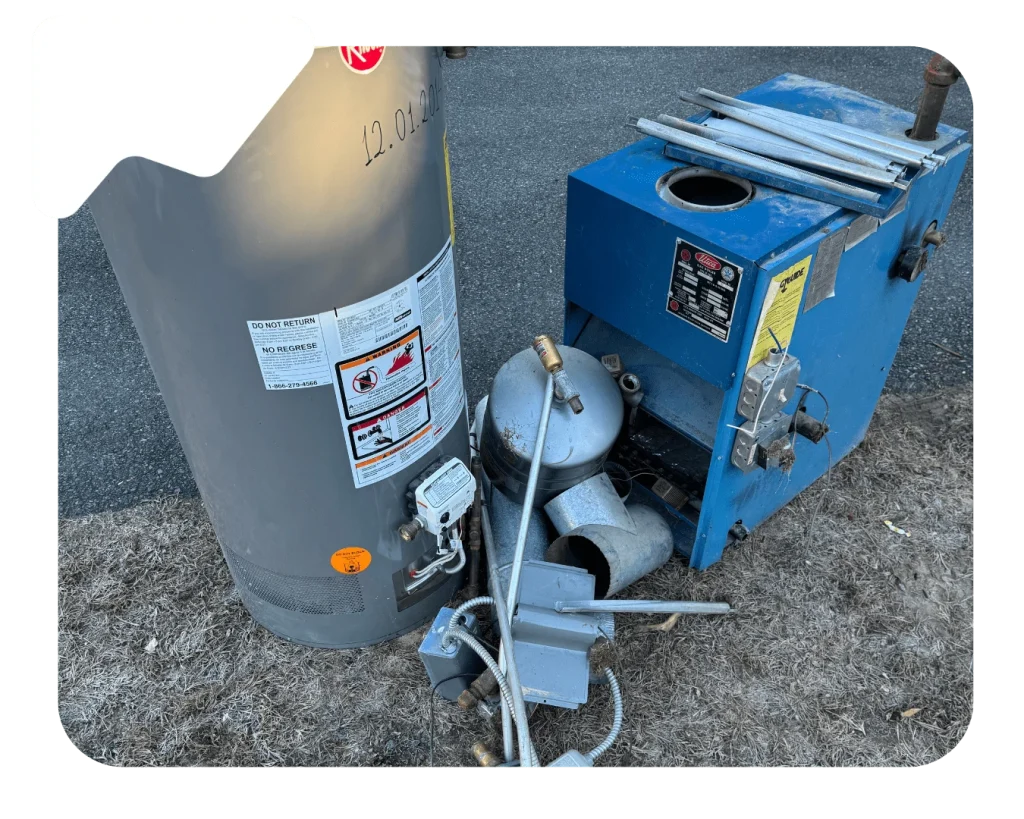

Looking to get more jobs and maximize your earning potential? Join Grunber’s Driver Network and connect with customers who need junk removal services in your area.
Once you know what needs to be removed, you need to identify the types of metal you’re dealing with. Most metals are recyclable, but some cannot be. Knowing the type helps with sorting and understanding the potential value.
Metals fall into two main categories:
How to Identify: The easiest way to distinguish them is the magnet test. If a magnet sticks, it’s ferrous. If it doesn’t stick, it’s non-ferrous.
Sorting is Key: Scrap yards and recycling facilities often require metals to be sorted by type. Sorting your metals ensures you get the best value and helps recycling facilities process the material correctly. If metals are mixed, you might be paid based on the lowest value metal in the mix.
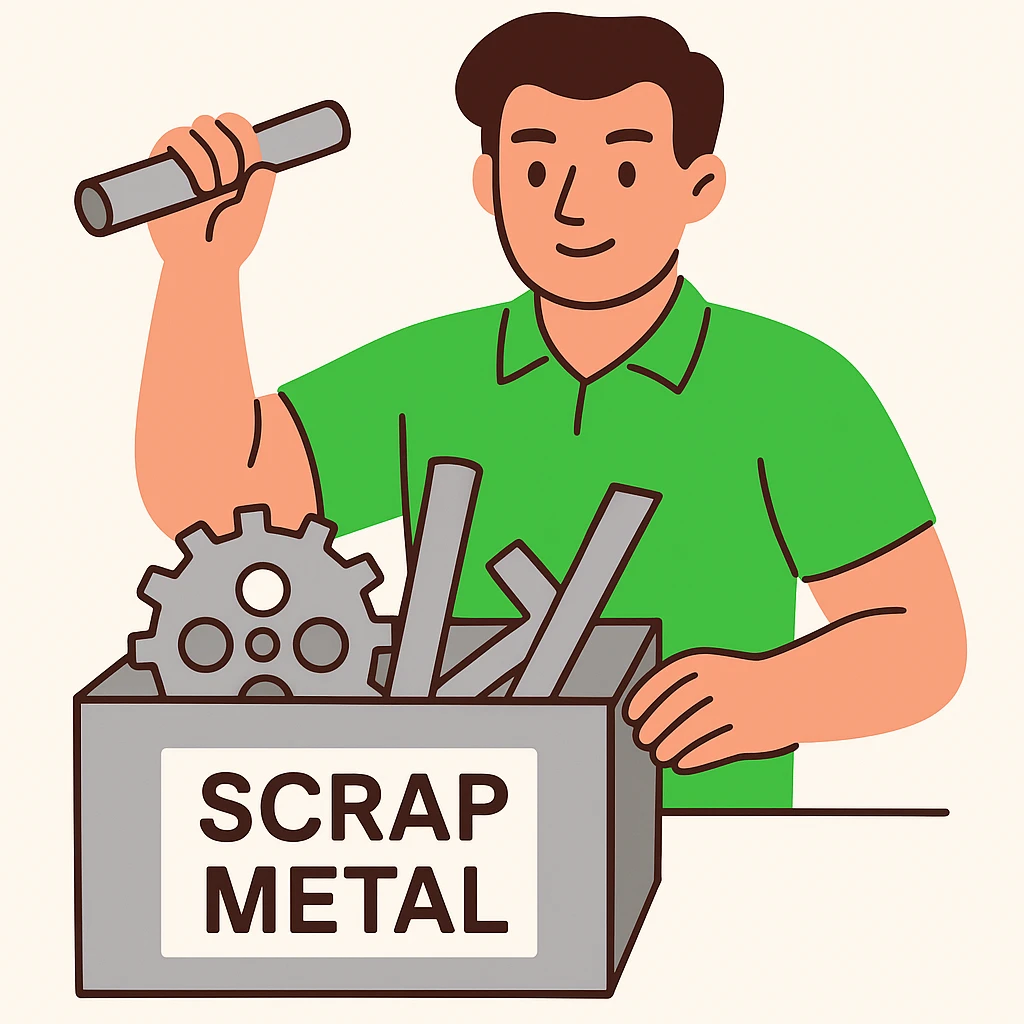
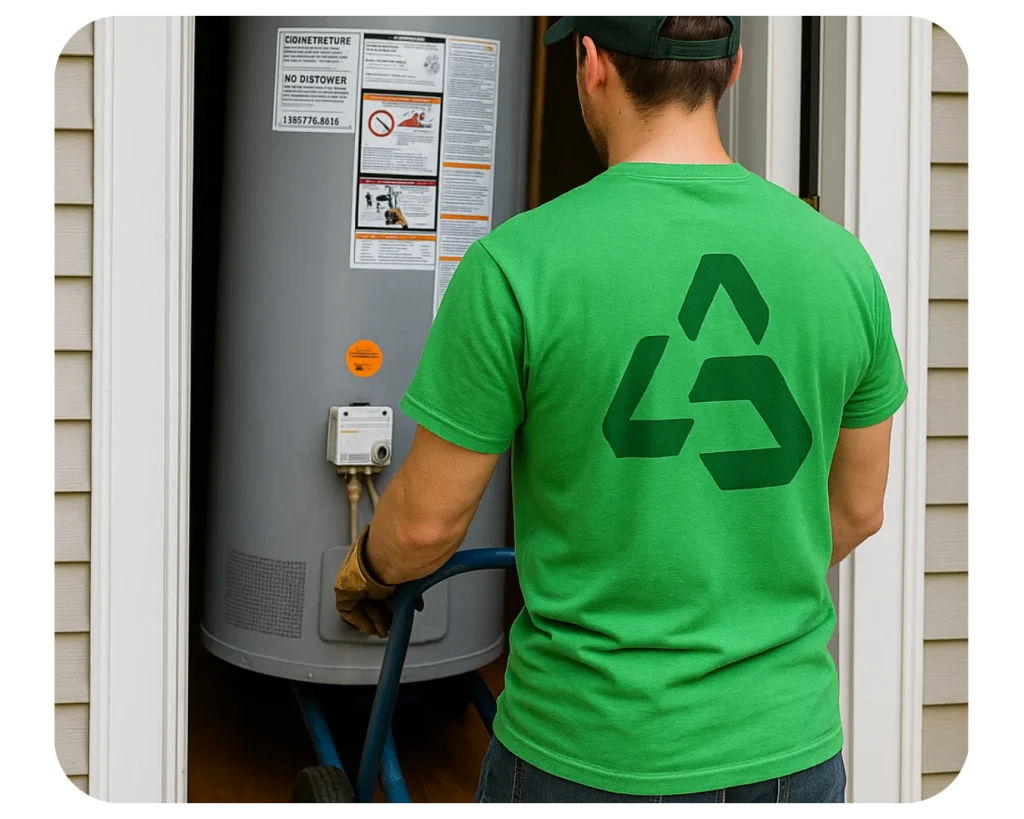
Removing scrap metal from a property requires care and attention to prevent injury and avoid damaging the customer’s home or business.
Protect the Property:
Once the metal is removed from the property, a little preparation goes a long way in making it ready for recycling and potentially increasing its value.
Bundle or Flatten Items: For large or bulky items like pipes or sheets, bundling or flattening them can save space and make transport easier. Investing in equipment like a scrap metal baler can significantly compress metal for easier storage and transport if you handle very large volumes.
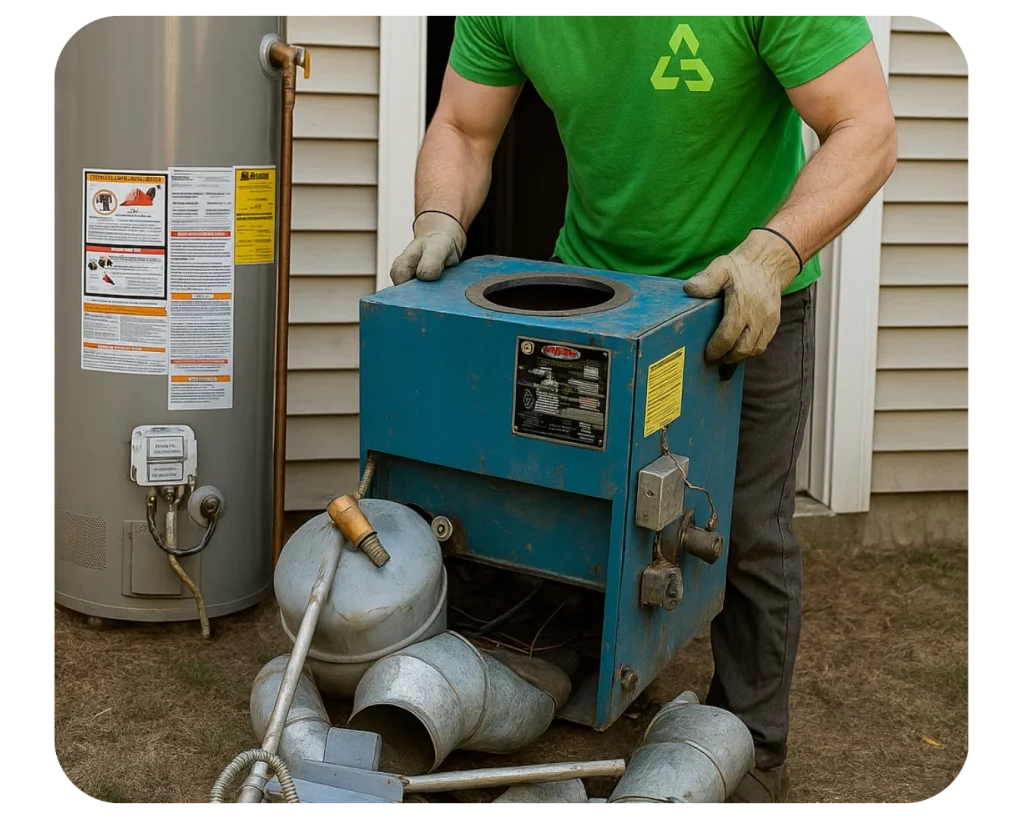
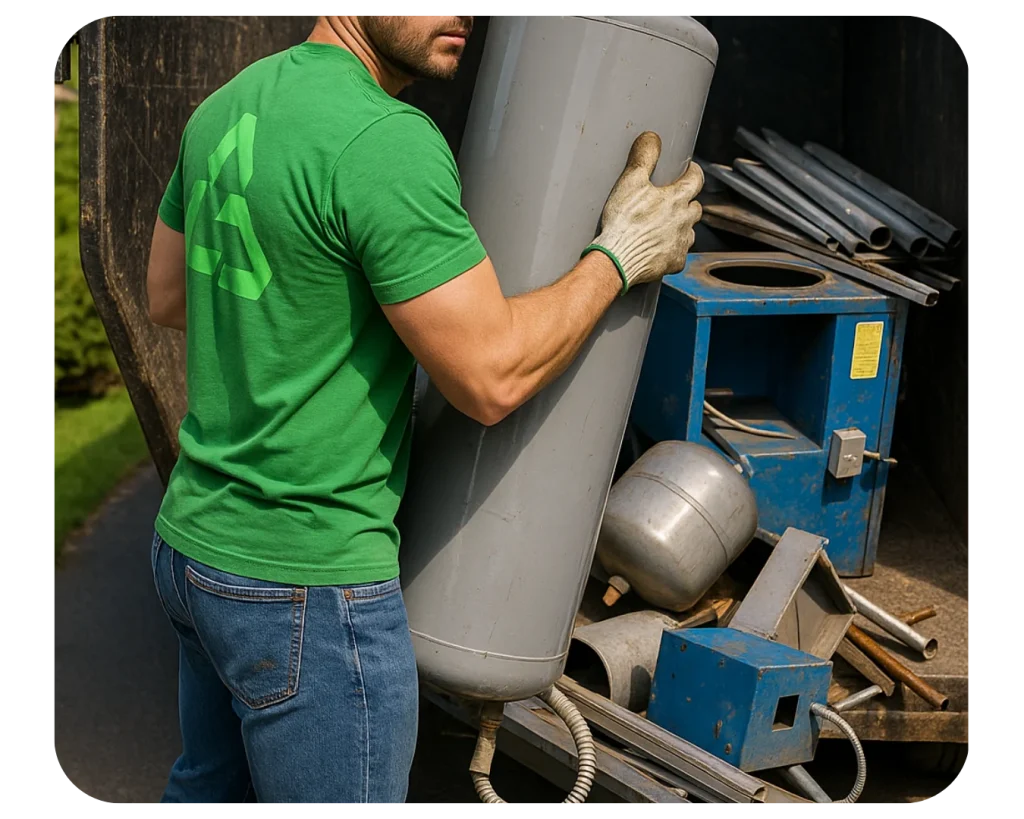
Transporting scrap metal requires proper planning and execution to ensure safety on the road and compliance with regulations.
Plan Your Route: Know where you are taking the metal and the best route to get there safely.
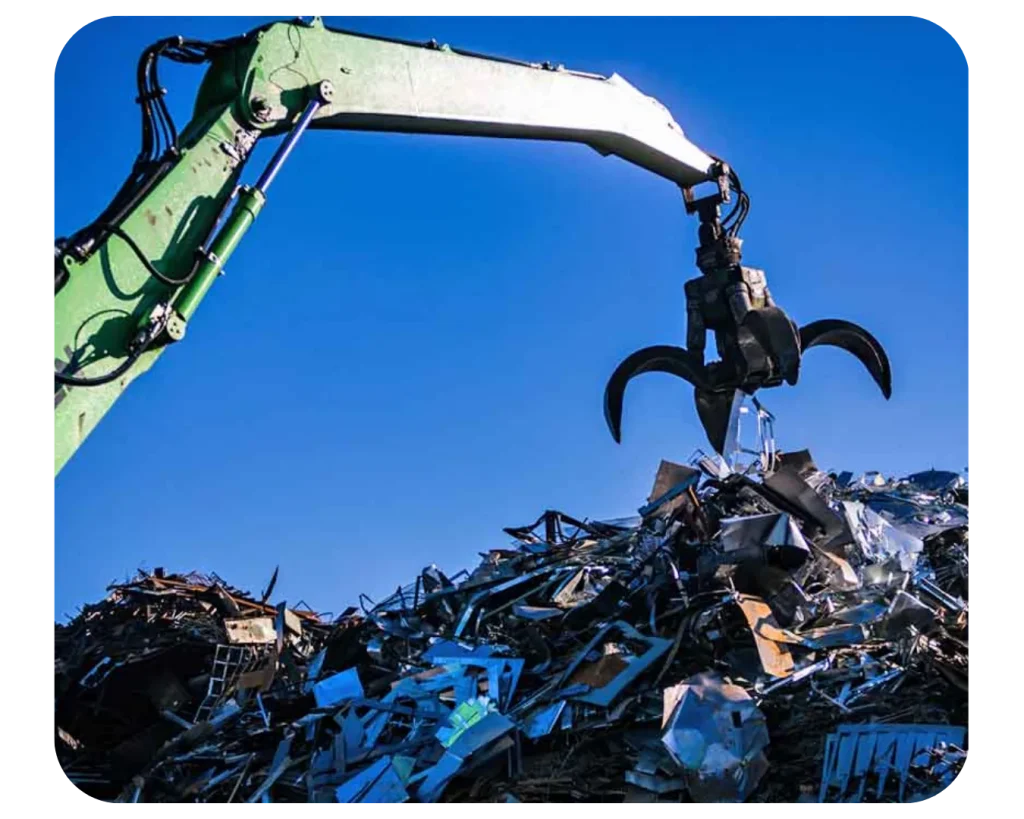
You have several options for disposing of the collected scrap metal. The best choice depends on the type and quantity of metal, your location, and whether the items are reusable.
Important Note: Scrap metal should be considered potentially hazardous until tested, as it could be covered in toxic materials. Wear safety equipment and handle carefully.
Don’ts
Do’s:
Alabama — Alaska — Arizona — Arkansas — Colorado — Connecticut — Delaware — Hawaii — Idaho — Illinois — Indiana — Iowa — Kansas — Kentucky — Louisiana — Maine — Michigan — Minnesota — Mississippi — Missouri — Montana — Nebraska — Nevada — New Mexico — North Dakota — Ohio — Oklahoma — Oregon — Pennsylvania — South Dakota — Tennessee — Utah — Vermont — Virginia — Washington — West Virginia — Wisconsin — Wyoming — California — Florida — Georgia — Maryland — Massachusetts — New Hampshire — New Jersey — New York — North Carolina — Rhode Island — South Carolina — Texas
Discover the most popular services and pages our customers are looking for:
© 2025. All rights reserved by Grunber LLC.